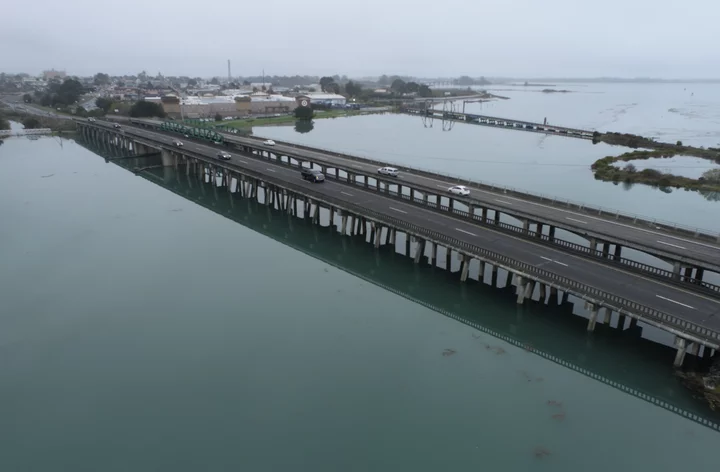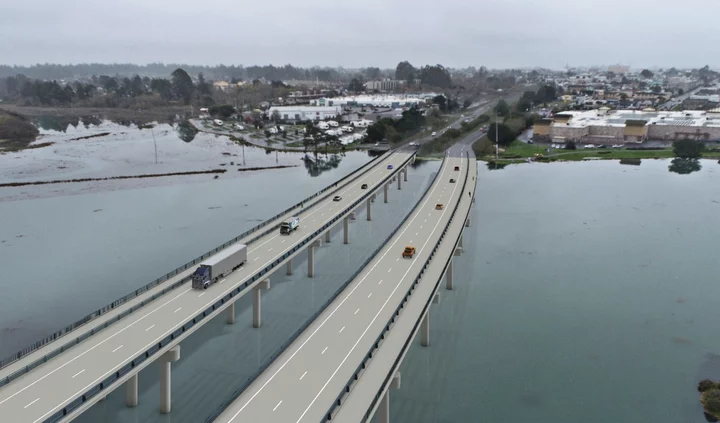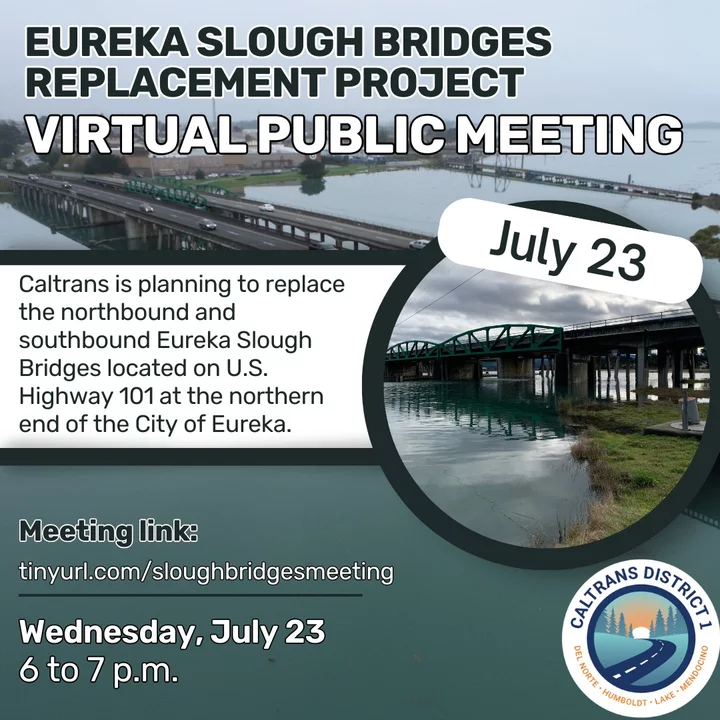An aerial view of the Eureka Slough Bridges, looking northwest. | Photos via Caltrans.
###
Caltrans is seeking public input on an ambitious plan to rebuild and replace the aging Eureka Slough Bridges on Highway 101 with a pair of modern, earthquake-resilient structures.
Last week, Caltrans released the Draft Environmental Impact Report (DEIR) for the Eureka Slough Bridges Project, kicking off a 45-day public review period. The 502-page document includes two design proposals for “mirrored” bridges — a set of identical bridges that run parallel to each other, carrying traffic in opposite directions — as well as a “no-build alternative,” which isn’t recommended by the agency. Construction is slated to begin in 2029 and is expected to last for four to five years.
One proposed design (Alternative 2A) is projected to cost $321 million, while another (Alternative 2B) is estimated at $293 million. The construction process would look different for each design, but the key difference in the finished product would be the distance between the northbound and southbound lanes, as seen in the renderings below.
Post-construction simulations of Build Alternative 2A (above) and 2B (below).
“Build Alternative 2A would construct a temporary bridge to manage traffic during construction, whereas Build Alternative 2B would construct a new southbound bridge adjacent to the existing southbound bridge to manage traffic during construction,” according to the DEIR. “The use of a temporary bridge would allow the new bridges to be rebuilt on nearly the same location as the existing bridges, while constructing the new southbound bridge adjacent to the existing would allow traffic to use the existing bridges throughout most of the construction phases.”
I know what you’re thinking: C’mon, the bridges are fine! Why can’t Caltrans just fix what needs to be fixed instead of tearing the bridges down and starting from scratch?
Caltrans Public Information Officer Myles Cochrane told the Outpost that engineers looked at various options to retrofit the structures but determined that “replacement is the only viable option to bring the bridges up to modern standards and enhance multimodal safety and access.”
The bridges — built in 1943 and 1956 — are approaching “the end of their design life,” meaning they were built so long ago that they no longer adhere to modern safety standards.
“The southbound bridge is considered fracture-critical, which means it lacks backup supports,” Cochrane said. “So if one key part fails, the bridge would need to be closed in the interest of safety. It also has a non-standard profile, meaning the shape and slope of the road as you drive on and off the bridge don’t match modern guidelines. This outdated design makes it more challenging for drivers to see clearly and react in time, which has led to a collision rate that’s twice as high as similar bridges across California.”
Folks interested in learning more about the bridge replacement project can attend a virtual public meeting from 6 to 7 p.m. on Wednesday, July 23. Written comments on the DEIR can be sent to eurekasloughbridges@dot.ca.gov or via snail mail to: Steve Croteau, Branch Chief, Caltrans North Region Environmental, 1656 Union Street, Eureka, CA 95501. Comments must be submitted by Saturday, August 9.
More information on the project can be found here.
###




CLICK TO MANAGE